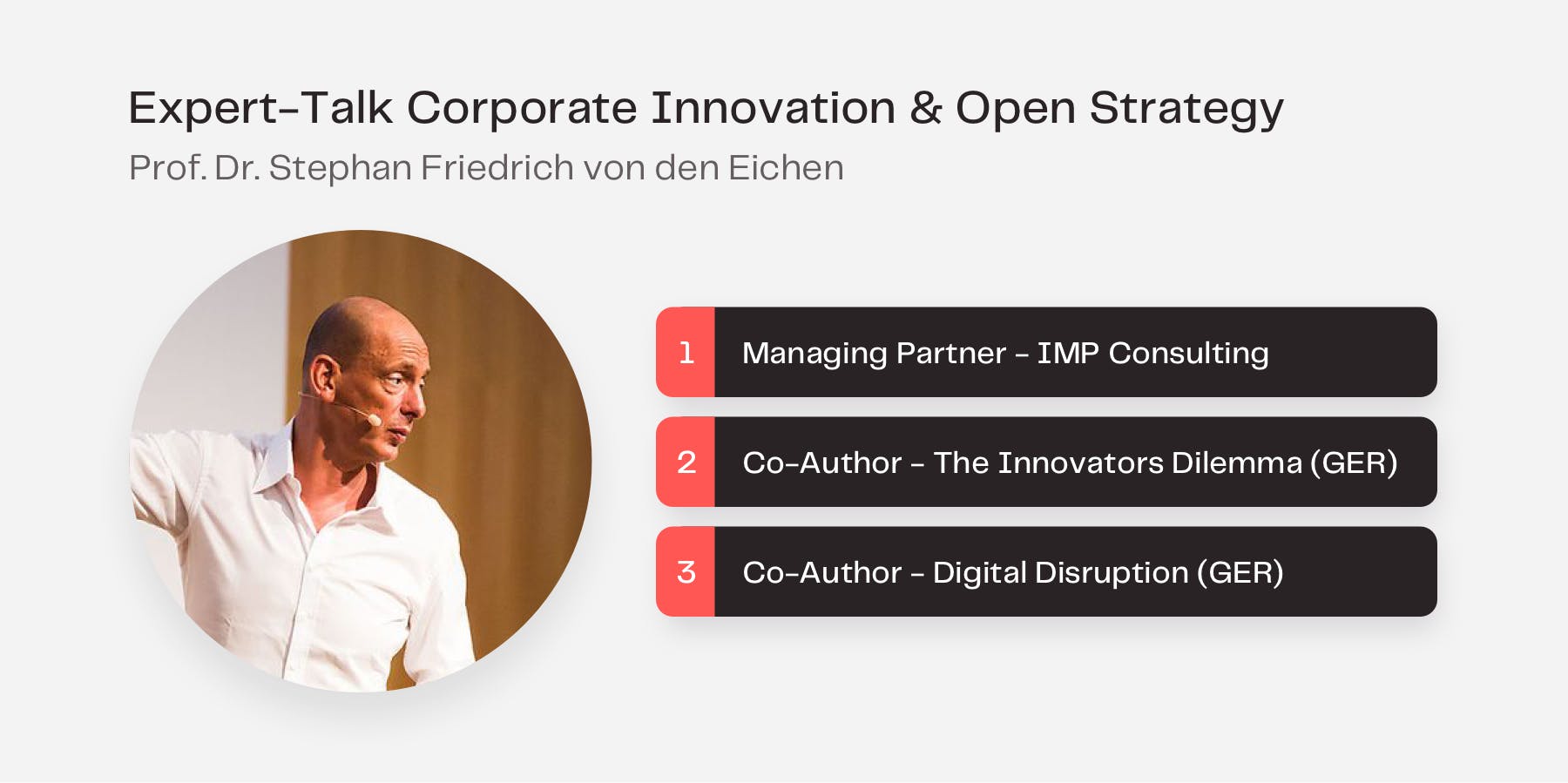Market Leadership: The Art of Innovation Pollination

Charles Darwin’s Theory of Evolution illustrates the consequences of environmental change on living organisms; many of these findings also apply in the business world.
Both organizations and living organisms house complex systems whose interconnected parts must work together for the good of the whole. In nature, it’s as simple as ‘adapt or die’. While perhaps not as eloquent in business terms, the basic premise remains the same. Organizations that do not adapt to their changing environment are in danger of becoming obsolete. The more rapid the pace of change, the more dire the consequences for those that stick to outdated practices.
Survival is at the top of the business agenda. Around 80% of executives think their current business model is at risk of being disrupted in the near future. In addition, 84% of executives state that innovation is important to their growth strategy. While these figures indicate a positive sentiment for incumbents, the success of corporate innovation remains dismally low, while the pace of disruption continues to accelerate.
Disruptive innovation, a term coined by Clayton Christensen, occurs when an underrated product or service becomes so popular that it replaces, or displaces, a conventional product or service. Disruptive innovators, generally startups, are defined by a set of characteristics that include lower gross margins, smaller target markets, and core offerings that are often simpler than their contemporaries.
In the past, successful business logic followed a structured roadmap. However, practices that were once guaranteed to lead to long-term success are no longer applicable. Disruption is an inescapable and growing challenge for all industries and its response requires a radical departure from familiar strategies.
Despite significant investments of time and money, innovation remains a frustrating pursuit for many established organizations. The capacity to innovate is often difficult for three reasons:
- Organizations fail to develop a strategy that aligns innovation efforts with the overall business strategy
- Organizations fail to execute the strategy
- Organizations fail to value new innovations properly and attempt to apply them to their existing customers and product architectures
New technologies are often too advanced to properly saturate and succeed in mature networks where most incumbents operate. However, for established organizations that do explore disruptive technologies, moving into new markets is often rejected by decision-makers as these segments are seen as too small to make a significant impact and their cost structure prevents market entry at sensible margins. As a result, agile startups take advantage of this underserved market with low-cost structures that enable them to operate and grow where incumbents could not. 55% of startups have adopted a digital business strategy compared to 38% of traditional companies.
Implementing an innovation strategy requires continual experimentation and adaptation to further grow a business, stay ahead of the competition, and take advantage of new technologies. Organizations that align their business and innovation strategies with a pro-innovation culture have a 30% higher growth rate in enterprise value.
While we are already beginning to see an organizational shift away from traditional R&D toward more open innovation, design thinking, and cross-collaboration, there is still some way to go.
Organizations that stand out as clear leaders within their industries all have one thing in common — they embrace innovation. To gain deeper insights about corporate innovation and open strategy, we spoke to Stephan Friedrich von den Eichen, Managing Partner of IMP and author of the Innovator’s Dilemma, German edition.

Understanding the Need for Continuous Organizational Development
What common misconceptions exist about re-evaluating and changing business models?
Stephan: Many people believe that changing your business model indicates that you are doubting what you have done in the past. This is simply not true. Embracing change means that you are adapting to a dynamic environment and future-proofing your company against any potential shifts that may affect the economy, society, or business markets. However, if you are only thinking about developing new products, this may be too short-sighted. In order to change or re-evaluate the business model, an organization must go beyond only offering new products. The actual lever for success lies within the combination of smart business model dimensions: positioning the company, the offering, the supply and value chain, the market approach, and the revenue logic.
When is the correct time for a company to re-evaluate its business model?
Stephan: Ironically, companies should re-evaluate their business model when things are running smoothly and revenues are high. This indicates that the organization is self-aware that in order to remain ahead of the curve, it is necessary to constantly re-evaluate best practices and iterate when performance falls short. It’s too late to only re-evaluate when figures are going down because, at this point, the pressure is going up! Unfortunately, this is still when most companies determine the need to take action. But by then companies don’t have the time or the energy to create something truly new because of their limited capacity to ideate and execute in high-pressure situations. This results in small-scale incremental innovation, which does not take the organization to the necessary level of innovativeness in order to compete.
What are the benefits of prioritizing digitalization as part of a corporate innovation strategy?
Stephan: Digitalization allows organizations to rethink their business model entirely. It is not only directed towards completely new services that go beyond the original offering, but it also includes the integration of supply chain partners and unique insights from customers. As a result, new — and more constant — revenue streams can be tapped into. 60% of companies that have undergone a digital transformation have created new business models. Thanks to digitalization, it has never been this easy to create big ideas and directly address a global market. Conversely, the danger of being disrupted by radically new business models and being forced out of the market, has never been this high. This again illustrates the urgent need for organizations to constantly explore new technologies in order to up their innovation ante.
Who is most challenging to convince in adopting corporate digitalization strategies?
Stephan: Innovation is everyone’s business. Strategies with major organizational implications should NOT be developed solely in the c-suite behind closed doors and forced top-down upon the organization. If this approach is taken, leaders looking for multipliers within their workforce will have difficulty finding acceptance. The team at IMP is strong believers in an open development approach that involves employees at all levels from the very start. From our experience with this open approach, the results are much better and also much easier for employees to support as these ideas originated from a process that everyone was involved in. Employees must be made aware of the need for change in order to be mobilized for new approaches. It will work best if they are involved at the beginning of the innovation process and develop a sense of ownership in doing so.
Why should organizations look externally to gain access to new ideas, knowledge, and technologies?
Stephan: In the medical field, for example, the accumulated knowledge of mankind doubles around every 70 days. There is a wealth of knowledge that exists outside of an organization which is beneficial in sourcing new ideas and solutions to specific industry challenges. The probability that someone else has dealt with similar problems in different fields in completely new ways is extremely high. Taking these insights from different perspectives through an open approach could help in solving an organization’s greatest challenges while simultaneously securing a competitive advantage. New and original business models are rare. Something that would be considered new in one industry sector may already be known in others. It’s more about the transfer of these business model ideas and resources that enable organizations to become inspired by other industries and business perspectives. We call this concept ‘cross-fertilization’ and this will only occur when a set of boundaries is overcome: personal, departmental, organizational, and industry.
What patterns do basic organizational disruptions follow?
Stephan: Disruptive innovations don’t just appear one day. They are created in small market niches and take evolutionary steps over time to become an organization’s worst nightmare or area of opportunity. Usually, disruptions are a result of new business models or service offerings that are empowered by technology. Netflix is one such example here. The company did not start out producing movies on its own video streaming platform. Their original business model was a rent-by-mail DVD service. Over time, the company transformed its business logic to make movies directly available to its customers via a streaming platform, which challenged the need for bricks-and-mortar rental giants like Blockbuster (who was that again?). Netflix would not have been able to scale its business this quickly without the help of Amazon Web Services which supplies them with the server infrastructure needed for Netflix’s service offering. There is no real timeline for disruption, however, it does require a long-term commitment. By embracing disruption, organizations are able to control potential risks and grow even in highly competitive environments.

Advancing Business Innovation
How can an organization successfully anchor innovation to its company culture?
Stephan: While it is a vital part of it, innovation excellence goes beyond company culture. It’s extremely important that employees are willing to support business leaders during times of change and contribute by bringing forward ideas. However, if the strategic intent is unclear, employees won’t know if their ideas actually match the intended organizational direction or why their ideas were turned down. This will directly impact employee motivation to deliver more ideas in the future. Even if the employee’s ideas match the strategic direction, if the wrong process exists, it becomes difficult for these ideas to be brought forward (e.g. by measuring them with the wrong KPIs or involving the wrong internal stakeholders). Therefore, we actually need to look at three key dimensions when talking about innovation excellence:
- Effectiveness (the organizational strategy or direction)
- Efficiency (the processes or speed at which ideas originate)
- Mobilization (how company culture and commitment will aid organizational innovation)
How is the fear of failure inhibiting organizations from exploring innovation strategies?
Stephan: The fear of failure can hinder innovation, but there are plenty of other barriers to first overcome. Mental barriers, structural barriers, and procedural aspects all play a significant role. Of the organizations that do have established innovation processes in place, these are mainly fit for product innovations and lack a focus on business model innovation. Often, we are also confronted with cultural inhibitions and resistance from top management that view new business models as too different or too radical for the organization to explore.
What are your thoughts on venture building or co-founding as a means of innovation?
Stephan: Venture building is an extremely effective vehicle in driving innovation forward from an outside perspective. This is in contrast with internal processes that have hindered corporate innovation in the past. Having the right people with the right mindset in the right place is vital for disruptive ideas to reach the next level of competitiveness. Incumbent companies traditionally collaborate with startups in a customer-centric type of relationship. Yet, more recently a number of opportunities have emerged for companies to utilize the expertise of external founders within their own organization’s development initiatives. Sometimes, it is unclear which business model approach is the best fit for a company. Essentially, we see four main types of company-owned innovation vehicles in the startup world: Innovation hubs, accelerators, venture capitalists, and company builders. Venture studios, for example, are a sub-variation of the company builder type, as further sub-variations apply for the other types accordingly. The variety of types and sub-types in this context descend from the central issue of the intended function, effort, and return, deemed necessary for the desired growth of the organization by exploring these types of innovation and support mechanisms.
Merging Business with the Machine Economy
Due to the increasing commoditization of machines, we are seeing the transition from CapEx to OpEx and more companies developing in the direction of software and services. What other trends exist?
Stephan: One trend is overall equipment efficiency (OEE) which measures an asset’s level of productivity. OEE provides valuable insight for businesses to schedule, organize, and predict maintenance needs, decrease downtime, and avoid common asset-related issues. Another trend, we are beginning to see is retrofitting. Smart factory retrofit solutions enable outdated machines or systems to access new technologies. The components can be installed on an existing machine or a particular part can be replaced with a new edition with improved features. Regarding CapEx to OpEx, we are seeing the variabilization trend emerge. More companies are integrating pay-per-use models in which investments are no longer made directly in machines, but rather in the production output provided. Variabilization improves the agility and flexibility of business models to move from fixed costs to variable costs. One thing that all these trends have in common is that they are only possible with the adoption of new technologies and strong digitalization-first approaches.
How would you define the Machine Economy in your own words?
Stephan: The Machine Economy represents a multi-tier paradigm shift for the manufacturing industry. It offers the potential for a new digital service ecosystem to emerge that has been built on top of high-quality machinery and hardware. This network is seamlessly integrated with both supply chain partners and customers to create more value for all stakeholders involved. The Machine Economy is enabling a completely new efficient infrastructure for a highly automated and interconnected future.
Innovation is at the Heart of Entrepreneurship
Corporate innovation is becoming more critical as the speed of the business cycle continues to increase and more agile competitors enter the market.
Throughout 2021 and beyond, more organizations will adopt a 360-degree innovation approach with the aim of increasing flexibility, driving growth, and becoming more agile. By 2025, the economic impact of IoT is estimated to reach over $11 trillion per year. This further indicates that disruptive technologies are making their mark in all industries and organizations will continue to invest more into exploring new layers of efficiency facilitated by automation technologies.
A robust innovation strategy is best achieved when business leaders embrace creativity and open approaches when coming up with new ideas. Leaders evaluating whether to invest in new technologies must do so with a futuristic frame of reference. Only then can these organizations expect to prosper in the new world of work.
--------
Special thanks to Stephan Friedrich von den Eichen for his valuable input on the topic.
For more insights on how to successfully master strategy and innovation in disruptive times, take a look at IMP's new book “Open Strategy - Mastering Disruption From Outside The C-Suite”.




